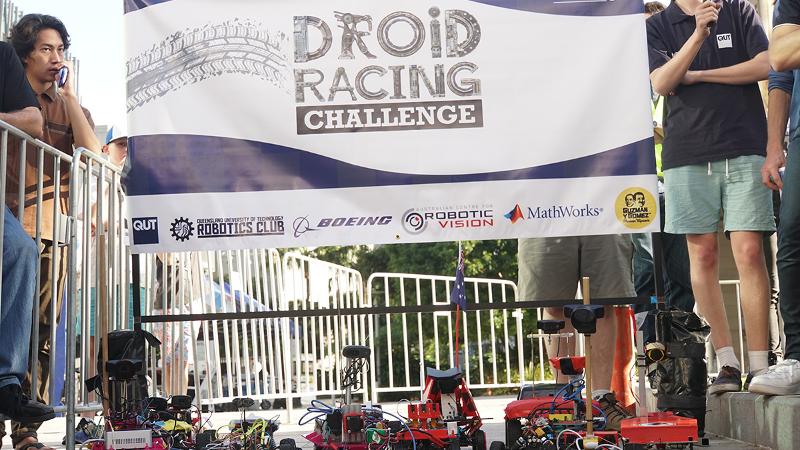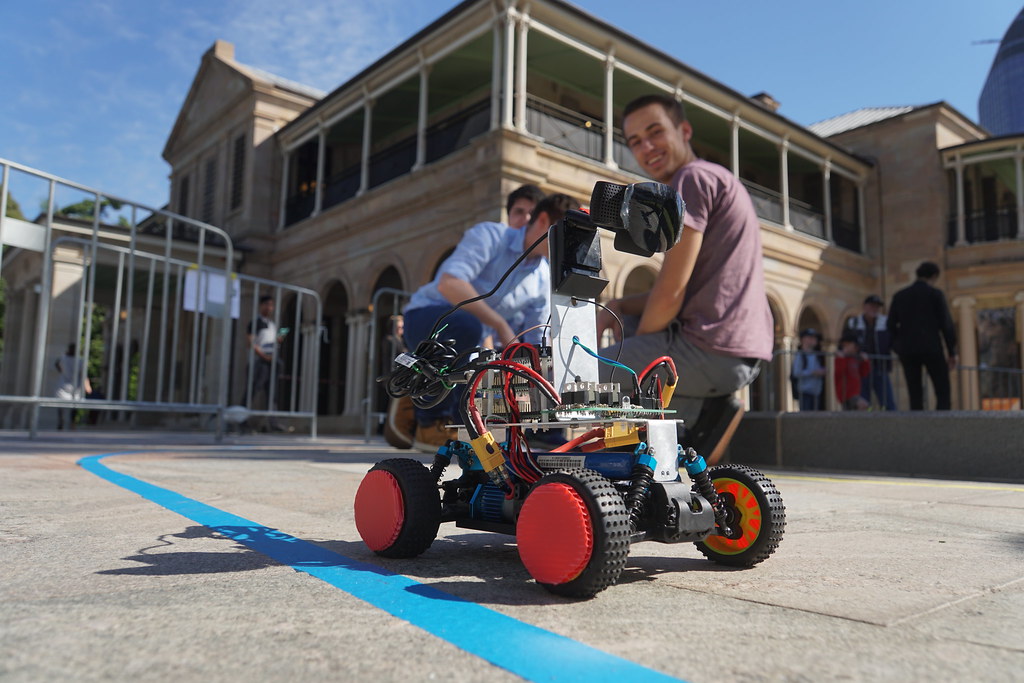
The sharp minds that will shape the future of driverless cars converged on QUT for a robot race that could influence the development of autonomous technologies.
Run by QUT’s student robotics club, the Droid Racing Challenge saw 12 teams from seven universities across Australia and New Zealand race unique autonomous vehicles using low-cost cameras to navigate the course.
It’s the only competition of its type in the Southern Hemisphere - run by students for students, and without any agendas.
“We created the competition in 2016 because most, if not all, autonomous robotics competitions are organised by companies that either enforce the use of their products to promote them or are looking to recruit future staff,” said QUT Robotics Club president Filippo Capurso.
“Our competitors are participating because they’re passionate - the brightest and most enthusiastic students from Australia and New Zealand coming together to work on a common challenge, comparing ideas and forging networks.
“The Droid Racing Challenge is perhaps the first steps undergraduate students can take from their engineering and IT courses towards real-world robotics challenges and innovations.
“It’s a chance to put their creativity to the test and learn new skills, but also compare their project with like-minded students from across Australia and New Zealand.”
Droids had three challenges to overcome on the race around the course: stay within the track; avoid obstacles; and avoid other robots.
Hot favourites, the University of New South Wales (UNSW), won first place in 2017. It was the only competitor to complete the course in the inaugural 2016 challenge.
“Historically, robotics challenges start off slow but the technology advances quickly, and I was really impressed with the technological improvements in just one year,” Filippo said.
“In 2017 most teams were able to complete the course and several also successfully avoided the obstacles.
“I’m expecting that next year these teams will get the trifecta by also avoiding other robots on the course – a much tricker problem because they are constantly moving.
“These competitors are experimenting with technologies that will one day power full-sized autonomous cars.
“Some use deep learning with convolutional neural networks, which is a stream of AI. Some use out-of-the-box combinations of basic sensors such as ultrasonics and laser scanners. Others are creating their own computer vision libraries for navigation, which is an ambitious move.”
QUT roboticist and director of the Australian Centre for Robotic Vision Distinguished Professor Peter Corke said the annual competition could unearth exciting technological developments.
“At the moment, autonomous cars use a suite of expensive laser sensors to navigate,” he said.
“An autonomous navigation system that uses low-cost cameras instead is going to be worth a lot of money to some people.”
Competing universities included Griffith University (1), QUT (3), Macquarie University (1), University of Auckland (1), University of New South Wales (2), University of Queensland (3), University of Wollongong (1)
Droid Racing Challenge winners
- 1st - University of New South Wales
- 2nd - University of Queensland
- 3rd - Macquarie University
- 4th - University of New South Wales
- Best design - QUT
Media contact:
Kate Haggman, QUT Media, +61 7 3138 0358, kate.haggman@qut.edu.au
After hours Rose Trapnell, QUT Media team leader, 0407 585 901
QUT is part of a national collaborative group of five major Australian universities that form the ATN (Australian Technology Network of Universities).





